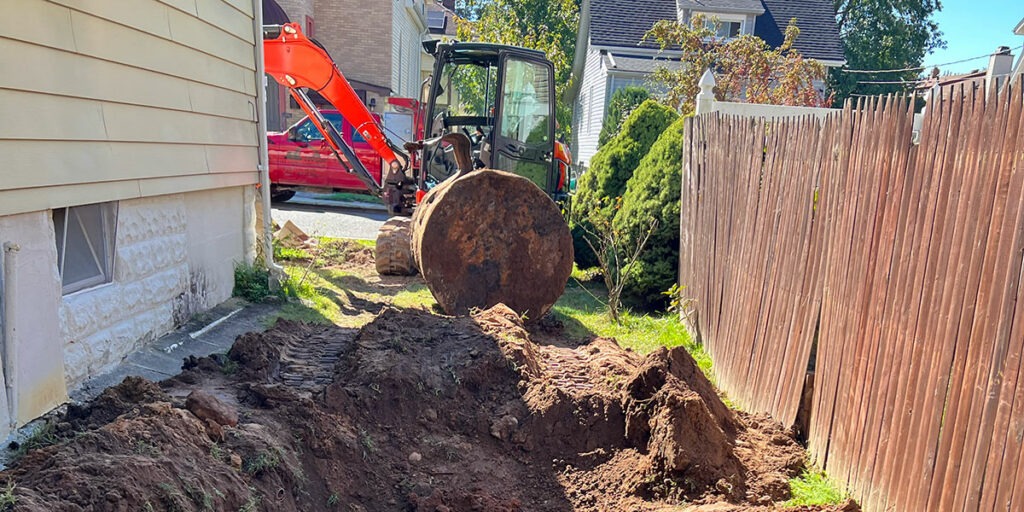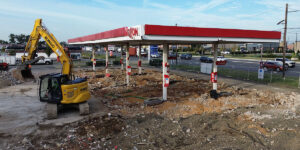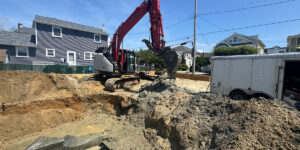If you have an underground oil tank in NJ your best course of action is to remove it as soon as the situation permits. The earlier you remove it, the better chances you have of not having to pay for an expensive remediation because it leaked.
When hiring a contractor for the job you want to check their credentials, experience and insurance coverage. An NJDEP closure license is required in the state of NJ to remove underground tanks. It is not legal for homeowners or any other contractors to remove underground storage tanks.
Always ask for a list of references and a certificate of insurance when hiring a contractor, checking their website and social media channels is a good way to find out what experience they have, or lack thereof.
Once you decide upon a contractor, your contractor will obtain the necessary permit(s) to remove the tank. In most cases it only takes a couple of weeks but it can vary depending upon the township.
A utility mark out will be called in, this needs to be done by the licensed contractor doing the work. It cannot be done by any other contractor, or the homeowner. Make sure you notifiy the contractor of sprinkler lines or gas grill propane lines, drainage pipes, etc. as items like that will not be covered by the utility companies mark out.
When the time comes for the job to start your contractor will show up, normally early morning to start the excavation with the necessary labor, equipment and PPE In some cases the tank may be located under a sidewalk or driveway instead of the grass. Either way, your contractor will restore it (make sure that’s included in your contract ).
The tank will be excavated, any remaining fuel will be pumped out and put into 55 gallon drums for disposal. If there is more than just a few drums of fuel, a vac truck will be dispached which is more economical for larger quantities.
The tank will be cut open, the sludge on the bottom will be cleaned out and placed into 55 gallon drums for disposal.
The tank will then be lifted out of the excavation and set to the side to wait for the township inspector.
The township inspector will come out the same day and look for signs of corrosion or holes and will look in the bottom of the excavation checking for signs of staining on the soil or strong fumes of oil that may have leaked.
If the inspection passes, you are all done, the excavation gets backfilled with clean fill, the lawn gets reseeded or the driving lot or sidewalk get restored.
If the inspection fails, a remediation needs to be done. A DEP case needs to be opened, a subsurface evaluator needs to come out and oversee the remainder of the project. Soil that is obviously contaminated will be dug out and set onto plastic sheeting and left on site until it’s approved into a disposal facility.
Once it appears as though all contamination has been dug out and stockpiled, soil samples will be taken from the sides and bottom of the excavation to make sure all contamination was removed and there is nothing remaining. A different set of soil samples will also be taken from the stockpile of contaminated soil to send to the disposal facility to obtain approval for disposal.
Once the samples from the excavation come back clean and the contaminated pile has been approved, the job can resume and the soil can be loaded into trucks and taken to the facility for disposal.
Upon completion of the load out, the report can be issued and sent to the DEP to close out the case and issue an NFA (no further action) letter which can take weeks, in most cases, months.
A remediation project adds on alot of time and alot of expense. You may get a sense why it is the best choice if at all possible to remove the tank as early as possible. If there is a tank that is out of use but can not be removed, the 2nd best course of action is to get it pumped out so if corrosion does occur or has occured, it minimizes the damages.




